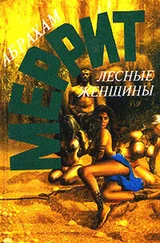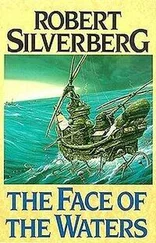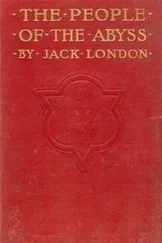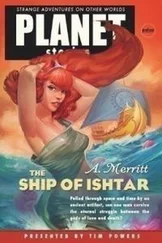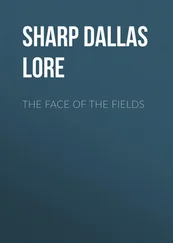Walking around them, Graydon saw that they were both male and female, and that each wore a crown. He bent closer. The crowns were miniature sculptures of serpent–people, serpent–men and serpent–women, their coils twisted round the heads of the gray ape–men like the sun–snake upon the Uraeus crown of the Pharaohs.
Down into the still pool a flight of yellow marble steps fell, vanishing in its depths.
Wondering, he walked over to a fissure, and as he drew near he saw that this whole face of the chamber had been broken away by the same force, earthquakes or subsidences perhaps, which had opened up the fissures. He peered out. He looked over the plain of the monolithic stones beyond the barrier. The chamber was at the very edge of the skyreaching wall.
The sun was low—was it rising? If so, the time he had spent with the Shadow had been but a night. He had thought it much longer. He watched for awhile—the sun was setting. His ordeal had lasted a night and a day.
He turned back to Kon, suddenly aware that he was both thirsty and hungry. Under the direct light from the fissures, the wall through which they had come stood out clearly. Looking at it he halted, forgetting both hunger and thirst.
Along all its thousand–foot length it was covered with paintings. Paintings by lost masters, as rich in detail as Michelangelo's Last Judgment, landscapes as mystically beautiful as those of El Greco or Davies, portraiture as true as Holbein's or Sargent's, colorful as Botticelli, fantastic—but only so, he knew, because they pictured an unknown world; nothing in them of the fantasy of the unreal. He ran back to examine them.
Here was a city of rose–coral domes whose streets were bordered by scaled trees red and green, with foliage like immense ferns. Along them the serpent–people were borne in litters upon the heads of the gray ape–men. And here was a night scene with the constellations looking serenely down upon smooth fields covered with rings of pale green radiance through which the serpent–people moved in some strange ritual.
There was something peculiar about those constellations—he studied them. Of course, the outline of the Dipper, the Great Bear, was not the same shape as now. The four stars of its bowl were closer for one thing, a perfect square. And there was Scorpio—its claws not an arc but a straight bar of stars.
Why, if that picture of them were true, it showed the heavens as they must have been hundreds of thousands of years ago. How many ages before those distant orbs could shift to the position they seem to occupy today? It dizzied him.
And there was something peculiar about the pictures of the serpent– people. They lacked that human quality, so marked and so weird, of the Mother. Their heads were longer, flatter, reptilian. Their bodies above their coils were plainly development of the saurian; unmistakably evolved from a reptilian stem. He could accept them as realities—since in varying environments the evolution of almost any kind of intelligent creature is possible. He realized that it was the abrupt transition from serpent to woman that made the Serpent–woman incomprehensible; unreal.
Again he knew the haunting doubt—was she in reality as he had seen her, or, by some unknown power of will, did she create in the minds of those who looked upon her, illusion of childish body and heart–shaped face of exquisite beauty? He went back to the pool and scanned more closely the crowns upon the gray ape–men. They were like the serpent–people upon the wall. He compared them with the bracelet on his wrist. Well, whoever had carved that had seen the Serpent–woman as he had.
Wondering, he went back to his study of the painted wall. He looked long at the painting of a vast swamp in which monstrous bodies floundered; from its mud hideous heads peered, and over it great winged lizards flapped on leathery bat–like wings. He stared even longer at the next. It was the same swamp; in the foreground was a group of the serpent–people. They lay coiled behind what appeared to be an immense crystal disk. The disk seemed to be swiftly revolving. And all over the morass, battling with the monsters, were winged shapes of flame. They held a core of brilliant incandescence from which sprang two nebulously radiant wings, like those of the sun's corona seen during some eclipses. These winged shapes appeared to pulse abruptly out of empty air, dart upon the monsters and fold their lambent wings about them.
And there was another city…the city across the lake from the cavern of the Frog–woman was a miniature of it, but there were no mountains around it. It came to him that this was the Yu–Atlanchi of the immemorial past, from which the serpent–people and those they had fostered had fled before the flood of ice whose creeping progress all their arts could not check…He saw a fleet of strange ships, one of them fighting off the attack of a group of gigantic seasaurians whose heads reared high above its masts…
The history of a whole lost world was within that painted cavern. It held the pictured record of a lost era of earth's history.
He saw that at one time the paintings had covered all four walls. They were almost obliterated on two sides, completely so on that of the fissures. Only where the passage had opened were the pictures complete.
What had this chamber been? Why abandoned? He was again aware of thirst. He walked back to the pool. He heard a warning click from Kon. Graydon pointed to the pool and to his throat. For full measure, he rubbed his belly and made the motions of chewing. The spider–man nodded, scuttled to the yellow steps and down them. He dipped a hand in the water, smelled of it; cautiously tasted it He nodded approvingly, bent down and sucked in a huge draft.
Graydon knelt and scooped up handfuls. It was cold and sweet.
Kon clicked to his comrades. They went searching about the fissures, and presently returned with large pieces of brown fungi. Kon took a bit, dipped it into water, bit off a corner and handed the balance of it to Graydon. He accepted it doubtfully, but tasting it found that it absorbed the water like a sponge and was somewhat like bread with a pleasant yeasty flavor. He took another piece and dipped it. The three Weavers squatted beside him. All solemnly sopped their fungi in the pool and chewed it.
And suddenly Graydon began to laugh. Surely no man had ever dined as he was dining—squatting there beside the weird pool with the three scarlet grotesques, dipping mushrooms in the water with topaz–eyed, hairless, gray ape–men looking on, and the history of a lost epoch spread out before him for his entertainment. He laughed and laughed, with swiftly growing hysteria.
Kon looked at him, clicking inquiringly. Graydon could not stop his laughing, nor the sobbing hiccoughs that now began to punctuate it. Kon took him up in his long arms, and swung him to and fro like a baby.
Graydon clung to him; the hysteria passed away. And in passing it took with it all the taint of the Shadow's whispers, all the hateful lure of the evil garden. The film of evil which lay upon his mind passed away like scum on water under a strong cleansing wind.
He was sleepy, he had never felt so sleepy! Now he could sleep without fear of the Shadow creeping into him. Kon wouldn't let anything like that happen. The light was dimming fast…sun must be almost down…he'd sleep for a few minutes…
Cradled in the arms of the spider–man, Graydon dropped into deepest, dreamless sleep.
Chapter XVII
Taking of Huon's Lair
DAWN WAS FILTERING into the painted cavern. Graydon sat up and looked uncomprehendingly about him. He was upon a bed of moss. One of the spider–men squatted close to him, studying him with puzzled, sad eyes. There was no sign of the others.
Читать дальше
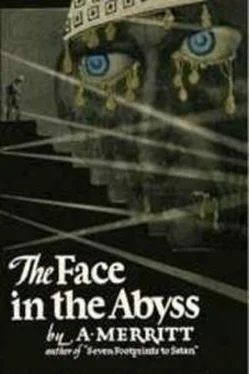
![Абрахам Меррит - Лунный бассейн [Лунная заводь]](/books/20623/abraham-merrit-lunnyj-bassejn-lunnaya-zavod-thumb.webp)

